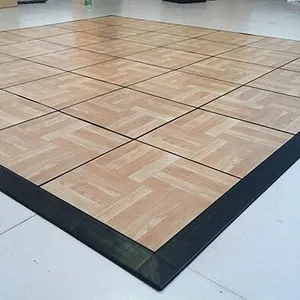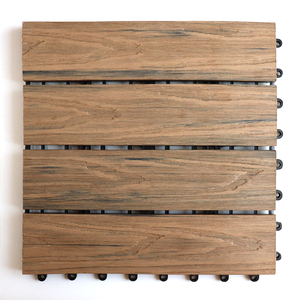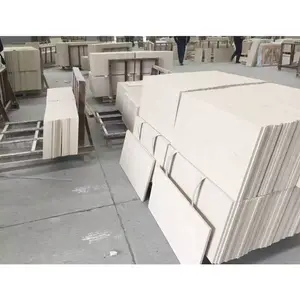Introduction
Selecting the perfect outdoor floor tile is a critical decision that marries both durability and aesthetics. Outdoor tiles are available in a plethora of types, each boasting unique characteristics and advantages. This guide will help you navigate through the various types of outdoor floor tiles, evaluate their durability, and balance this with aesthetic considerations. We will also explore how to harmonize tiles with outdoor decor to create a cohesive look for your outdoor spaces.
Understanding Outdoor Floor Tiles
Outdoor floor tiles are available in various types, each with unique characteristics. Natural stone tiles like slate, limestone, and sandstone offer a unique aesthetic. Man-made tiles such as ceramic, porcelain, and quarry tiles are typically used indoors but can be adapted for outdoor use with proper installation and care. Other options like concrete, wood deck, and other types of tiles also offer diverse choices for outdoor flooring. The selection of the right tile involves considering factors like weather resistance, wear and tear, and maintenance requirements.
Types of Outdoor Floor Tiles
Outdoor floor tiles come in a variety of types, each with unique characteristics. Natural stone tiles like slate, granite, limestone, and sandstone offer a rustic look. Man-made tiles like ceramic, porcelain, and quarry tiles can be adapted for outdoor use with the right precautions. Concrete tiles offer a robust option, while wood deck tiles provide a natural aesthetic. Other options include interlocking plastic tiles, rubber tiles, and even carpet tiles. Each tile type has its own advantages and considerations, so it's important to choose based on your specific needs and climate conditions.
Ceramic and Porcelain Tiles
Porcelain tile is a popular choice for outdoor flooring due to its exceptional durability. These tiles are made from a type of ceramic clay that is fired at very high temperatures, resulting in a dense and hard material. The slipperiness of porcelain tiles can vary depending on their surface texture and finish. Some have a smooth and polished finish, which can be more slippery, especially when wet. Others have a textured or matte finish, providing better traction and reducing the risk of slipping.
Natural Stone Tiles
Natural stone tiles have been used as flooring material for thousands of years, valued for their aesthetics and durability. These tiles are purely natural, free of industrial chemicals, and do not negatively affect indoor air quality. They are eco-friendly and excellent for heating, especially marble, which conducts and retains heat effectively. Each tile has unique colors and features, a characteristic not found in industrially manufactured tiles. Natural stone tiles are easy to clean, incombustible, water-resistant, mold-resistant, and crack-resistant. They do not trap dust and require low maintenance, making them a cost-effective choice in the long run.
Concrete Tiles
Concrete tiles can dramatically transform outdoor spaces. They offer a unique blend of comfort, style, and ease, making any location a perfect haven for entertaining. You can opt for bold, patterned tiles or choose solid colors to blend with the natural elements. These tiles not only enhance the aesthetic appeal but also add a personal style stamp to your outdoor space.
Wooden Deck Tiles
Deck tiles, often made from various types of wood, are a popular choice for outdoor flooring. They're designed to interlock, making DIY installation quick and easy. They can be placed over existing surfaces, protecting them from further damage. Deck tiles come in a variety of wood types and finishes, catering to diverse consumer preferences. Some tiles mimic the look of stone or grass. However, they're not a permanent solution and the seams between individual tiles may be visible.
Assessing Durability of Outdoor Tiles
Durability is a key factor when choosing outdoor tiles. Porcelain tiles are a popular choice due to their longevity and resilience. They are more resistant to potential scratches compared to indoor tiles. Another option is concrete tiles, which can mimic the look of high-end ceramic tiles or natural stone. However, they require frequent sealing to maintain their appearance. Slate tiles are sturdy and strong, with an inherent surface texture that makes them anti-slippery. Granite tiles, while natural, are not as effective as other outdoor tiles due to their slipperiness and porous nature, requiring frequent sealing to prevent moisture absorption and staining.
Weather Resistance
Outdoor tiles need to be weather-resistant to contend with inclement weather. Rainwater can make them slippery or deteriorate their quality, depending on the material used. The slope of the ground also affects how waterproof your tiles are. Even with a waterproof undersheet, some slopes collect stagnant water that can harm them. Therefore, it's beneficial if tiles are entirely waterproof, but this is rarely the case. Proper installation using a waterproof membrane can make them immune to water damage.
Wear and Tear
Porcelain tiles are an excellent choice for outdoor applications due to their superior durability. They have a water absorption rate of less than 0.5 percent, making them resistant to staining and weathering. They won't crack in freezing temperatures like other materials. Additionally, porcelain tiles are extremely resistant to UV fading, even when placed in direct sunlight. The manufacturing process of porcelain tiles makes them stronger and more durable than ceramics in high-traffic areas. However, they are more expensive and heavier than other ceramic products, and can be difficult to cut without specialized equipment.
Maintenance Requirements
Maintaining outdoor tiles requires a few simple steps. First, clear the area of any debris. Then, rinse the patio using a garden hose or a bucket of water. Apply a safe cleaner, ensuring it's not harmful to your patio or the environment. Scrub stains using a natural or synthetic brush, avoiding metal which can scratch natural stone. Clean the grout using a specialized product. Rinse away the residue with clean water and let the area dry fully. If your tiles and grout are due for sealant, apply it to protect them for future use. Regular cleaning prevents buildup of dirt and mildew.
Balancing Durability with Aesthetics
Porcelain tiles offer a balance between durability and aesthetics. Their superior durability makes them ideal for high-traffic outdoor areas. They are versatile, available in various textures, colors, and patterns, fitting any outdoor decor. Despite being thinner and lighter than stone and concrete, they resist moisture, stains, and fire. However, they are more expensive and heavier than other ceramic products, and cutting them requires specialized equipment. Thus, while porcelain tiles offer a blend of durability and aesthetics, considerations about cost and installation complexity should be taken into account.
Color and Design Considerations
To modernize a patio with rustic wood elements, consider a striking black and white tile scheme. Whimsical patterns with neutral colors can create a similar effect without clashing. Pair the tiles with timeless and neutral furniture that won't overwhelm the eye. This will help balance the space and create a cohesive look. With careful consideration of color and pattern, you can update your patio while maintaining its original charm. Additionally, large format terrazzo pavers are an ideal choice for those seeking to recreate the charm of an English country garden. These timeless and classic pavers have been a popular choice for many years.
Matching Tiles with Outdoor Decor
One challenge with indoor-outdoor transitional spaces is that you need a style that looks good both indoors and outdoors. Ceramic tile makes transitional design easy with a limitless amount of styles, including many different coordinating “families” of tile options that have been designed to complement one another for use on many different types of surfaces. Ceramic tile allows you to blur the distinction between inside and outside with coordinated styles for your indoor and outdoor floor tile, wall tile, and more.
Creating a Cohesive Look
Creating a cohesive look for your outdoor spaces is crucial. Grey and brown tiles offer a perfect solution. These tiles not only enhance the spaciousness of your outdoor areas but also harmonize beautifully with various decor styles. Whether you're aiming for a modern minimalist look or a rustic charm, these tiles can seamlessly blend in, providing a balanced and aesthetically pleasing ambiance.
Conclusion
In conclusion, selecting the right outdoor floor tile involves a careful balance of durability, aesthetics, and maintenance requirements. Porcelain tiles stand out for their superior durability and versatility, while natural stone tiles offer unique aesthetics and eco-friendliness. Concrete and wooden deck tiles also provide unique benefits. It's essential to consider weather resistance, wear and tear, and maintenance needs when choosing your tiles. Furthermore, color and design considerations play a crucial role in creating a cohesive look that complements your outdoor decor. By considering all these factors, you can transform your outdoor space into a beautiful, durable, and functional area.

































 浙公网安备 33010002000092号
浙公网安备 33010002000092号 浙B2-20120091-4
浙B2-20120091-4